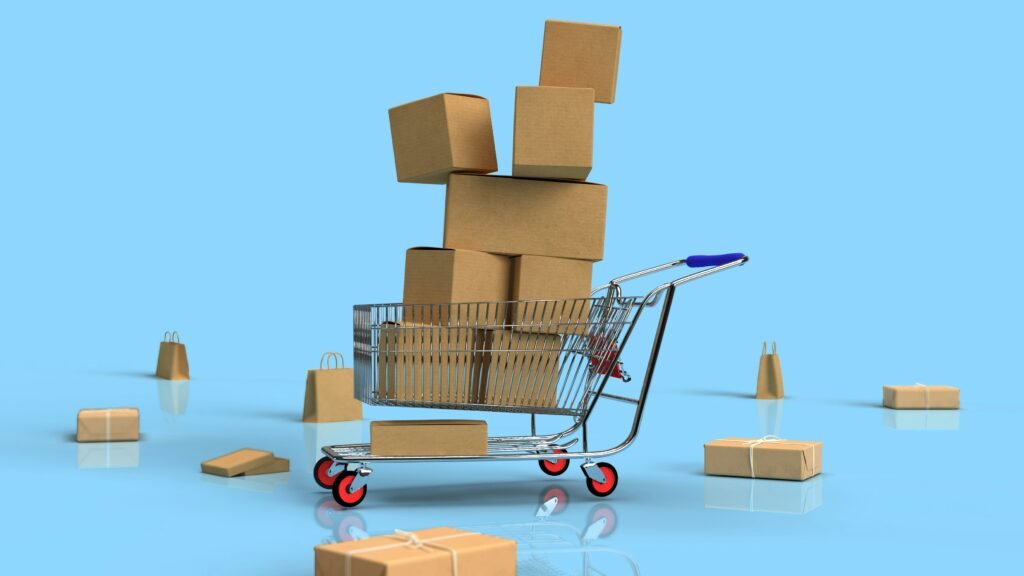In the run up to Prime Day 2025, I’m doing a series of blog posts on the aspects of online shopping that no one is brave enough to tell you but you absolutely need to know.
That ₹99 delivery fee just became ₹199. Sound familiar? If you’re shopping online in India, you’ve probably experienced this. What started as a convenient way to save money has quietly become a bank balance-draining habit for us online shoppers without knowing it.

More recently, a lot of Indian consumers are facing increasing costs when shopping online for groceries, electronics and fashion. But here’s what most people don’t realize – the technology behind these platforms is specifically designed to extract maximum value from your wallet.
The Real Cost Breakdown: More Than You Think
Let’s break down what you’re actually paying when you click “Buy Now” on your favorite shopping app:
- Base Product Cost: ₹1,000 (smartphone cover)
- Platform Commission: ₹50-100 (hidden in product price)
- Delivery Charges: ₹99-199 (surge pricing during peak times)
- Packaging Fee: ₹25-50 (often not mentioned upfront)
- Payment Gateway Charges: ₹20-30 (for certain payment methods)
- GST on Delivery: ₹18-36 (yes, you pay tax on delivery too, if you don’t believe me ask Nirmala Aunty)
- Total Hidden Costs: ₹212-415 (21-41% markup on a ₹1,000 product. Oof.)
Compare this to walking into a local electronics store where you’d pay ₹1,000 flat, and suddenly that “convenience” doesn’t seem so convenient.
How Dynamic Pricing Algorithms Work Against You
Here’s where it gets technical – and devious. Online shopping platforms use sophisticated algorithms that adjust prices in real-time based on:
- Your browsing history – Visit a product multiple times? The algorithm interprets this as high intent and may increase the price. And how many times will you clear cache and delete cookies? You can be sure that Amazon and others have your data already.
- Your location – Living in a tier 1 or tier 2 city? You’ll often see higher prices than someone in a smaller town.
- Your device – iPhone users frequently see higher prices than Android users, based on perceived purchasing power. Ameer log.
- Time of day – Prices can surge during lunch hours (12-2 PM) and evening hours (7-9 PM) when people are most likely to shop. Try this and see for yourself.
- Demand patterns – During festivals, flash sales, or even when a product is trending on social media.
The ‘Kirana’ Store Reality Check
Let’s do a real comparison. Take rice – a staple in every Indian household:
Online (Big Basket/Grofers):
- Rice (1kg): ₹95
- Delivery: ₹49
- Packaging: ₹10
- Total: ₹154
Local Kirana Store:
- Rice (1kg): ₹90
- Delivery: Walk 2 minutes (for a lot of us atleast)
- Packaging: Your own bag
- Total: ₹90
The savings? ₹64 per kilogram. For a family buying 10kg rice monthly, that’s ₹640 saved – enough for a month’s mobile recharge!

Tech Tools to Fight Back
Okay, technology can also work in your favor. Here are the tools every smart Indian shopper could use (none of them are sponsored – and message me the tool that you’ve used and found success with):
Price Comparison Extensions:
- IndiaShopping.com Browser Extension – Automatically shows prices across platforms
- PriceDekho App – Real-time price tracking for electronics
- MySmartPrice – Compares prices and shows price history graphs
Deal Tracking Apps:
- CouponDunia – Aggregates genuine discount codes
- Paisawapas – Cashback tracking and genuine deals
- DealShare – Community-driven deal sharing
Budget Control Tools: Any one, even Microsoft Excel, to track and maintain your budget. I don’t use a tool myself but at the end of every month I analyze my credit card statement (which I always pay in full!) and bucket my spending for the next month.
The Festival Sale Trap
I hate this.
E-commerce sites have perfected the art of the festival sale. During Diwali, Dussehra, or Republic Day sales, prices are artificially inflated 2-3 weeks before the sale, then “discounted” to normal levels during the sale period.
Try this: Use price tracking tools to monitor products for at least a month before any major sale. You’ll often find that the “50% off” deal is actually just 10-15% off the regular price.
Smart Shopping Strategies for Indian Consumers
- The 48-Hour Rule (my favourite): Add items to your cart but wait 48 hours before buying. Often, prices drop or better deals appear.
- Clear Your Cookies: Shop in incognito mode to avoid personalized pricing. Okay it’s a headache but in general it’s good security practice to clear your cookies once a week or so as a habit.
- Use Multiple Devices: Check prices on different devices and browsers. Don’t be logged in on all devices.
- Time Your Purchases: Shop during off-peak hours (early morning or late night) for better delivery fees.
- Compare Offline: For purchases above ₹2,000, always check offline stores first.
The Bottom Line
Online shopping in India isn’t always the money-saver it pretends to be. With hidden costs, dynamic pricing, and psychological manipulation, that “convenient” purchase can end up costing 20-40% more than traditional shopping.
The key is staying informed about these tactics and using technology to your advantage.
Stay informed, stay smart, and keep those hidden costs in check. Your wallet (and your wife / mummy / me for some reason) will thank you.
Share this with a family member who loves online shopping, and check back on the blog for my next post!

[…] Or, screw online shopping altogether and go to your ‘kirana’. Read this post. […]